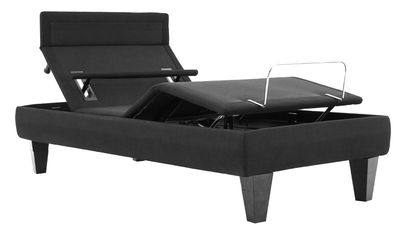How to Clean Your Mattress: A Comprehensive Guide

Maintaining a clean mattress is essential for a restful night's sleep and overall health and well-being. Over time, mattresses accumulate dust mites, allergens, sweat, and stains, making regular cleaning necessary. This guide will explain the steps to clean and maintain your mattress, ensuring it stays fresh and comfortable for years.
Step 1: Gather Your Mattress Cleaning Supplies
Before you start the cleaning process, gathering all the necessary cleaning supplies is essential. These supplies will ensure you have everything you need to clean your mattress effectively. Some standard cleaning supplies for mattress cleaning include:
- Vacuum cleaner with upholstery attachment
- Baking soda
- Mild liquid detergent
- Distilled white vinegar
- Spray bottle
- Clean cloths or microfiber towels
- Mattress protector (optional)
- Hydrogen peroxide (optional)
Having these items ready beforehand will make cleaning smoother and more efficient.

Step 2: Strip the Bed and Wash All Bedding
Remove all the bedding from your mattress, including sheets, pillowcases, and any mattress protectors you might have. After removing them, washing these items according to the manufacturer's instructions is a good practice. Washing the bedding is essential because it prevents dust, allergens, and any accumulated debris from re-entering the mattress when you put it back on. Clean bedding contributes to a healthier sleep environment.
Step 3: Let the Mattress Breathe
After you've stripped the bed and removed all the bedding, it's a good idea to let your mattress "breathe." This step involves allowing your mattress some time in a well-ventilated area. Doing so lets the mattress air out, releasing any trapped moisture or odors. Placing the mattress in a well-ventilated space with good airflow is beneficial for maintaining its freshness and cleanliness.
Step 4: Vacuum the Mattress
Vacuuming the mattress removes loose dirt, dust, dust mites, and surface allergens. You'll use a vacuum cleaner with an upholstery attachment to do this. Ensure you cover the entire mattress surface, paying particular attention to seams, crevices, and tufted areas where dust and debris accumulate. Vacuuming helps clean the mattress and contributes to a healthier sleep environment.
Step 5: Spot and Clean Stains
Address any stains on your mattress:
- For fresh stains, gently blot the area with a clean, damp cloth to absorb excess liquid.
- Mix a small amount of liquid detergent with water and dab the stained area, working from the outside inwards. Avoid over-wetting the mattress.
- Rinse by blotting with a clean cloth.
- Use a mixture of hydrogen peroxide and water (1:1 ratio) or a specialized mattress stain remover for stubborn stains. Test a small, inconspicuous area first to ensure it doesn't damage the fabric.
Step 6: Clean the Mattress with Baking Soda
A baking soda will help to neutralize odors, absorb moisture, and break down stains. In this step, you'll evenly distribute an amount of baking soda over the entire surface. Baking soda needs time to work magic, so allow it to sit for at least 15 minutes. You can leave it on for several hours or overnight for a deeper clean. Baking soda is effective in refreshing your mattress and eliminating odors.
Once the baking soda has had sufficient time to work, use your vacuum cleaner equipped with the upholstery attachment to extract it from the mattress thoroughly. Be meticulous in ensuring that no baking soda residue remains.

Step 7: Flip the Mattress and Clean the Other Side
Not all mattresses are designed to be flipped, but if yours is reversible, this step is essential for maintaining freshness. Start by flipping the mattress over to expose the other side. Then, repeat steps 4 to 6 (vacuuming, spotting stains, and cleaning with baking soda) on this newly exposed side. Cleaning both sides of the mattress helps ensure your entire mattress is clean, fresh, and free of dust, allergens, and odors.
Step 8: Protect Your Mattress
The final step in mattress maintenance is to consider using a mattress protector or cover. These protective covers are a barrier between your mattress and potential spills, allergens, and stains. By using a mattress protector, you can extend the life of your mattress and make future cleanings easier. These protectors are typically waterproof and allergen-resistant, offering added peace of mind for a cleaner and more hygienic sleep environment.
Benefits of Cleaning Your Mattress
Cleaning your mattress regularly comes with benefits. They include:
- Reduce Allergens: Cleaning your mattress helps eliminate dust mites and allergens that accumulate over time. Reducing these allergens creates a healthier sleep environment, especially for individuals with allergies or asthma.
- Promote Indoor Air Quality: A cleaner mattress means fewer airborne particles in your bedroom, which can improve indoor air quality. This cleaner air can lead to better respiratory health and a more restful night's sleep.
- Extend Your Mattress's Life: Regular cleaning and maintenance can prevent wear and tear on your mattress. Removing dirt and debris can extend its lifespan, saving you money in the long run.
- Promote a Healthier Night's Sleep: A clean, fresh mattress provides a more comfortable and hygienic sleep surface. This helps to achieve a better night's sleep, as you're less likely to be disturbed by allergens, odors, or discomfort from a dirty mattress.
Regular cleaning and maintenance of your mattress ensure a longer lifespan and a healthier sleep environment. By following these steps, you can enjoy a fresh, clean mattress that promotes restful sleep and contributes to your overall well-being.

FAQs about Mattress Maintenance
How Often Should You Clean Your Mattress?
Generally, it is recommended to clean your mattress every three to six months. If you have allergies or pets, more frequent cleaning may be necessary every one to two months.
How Can I Prolong the Lifespan of My Mattress?
To extend the life of your mattress, consider using a mattress protector to shield it from spills, stains, and allergens. Rotate the mattress regularly to distribute wear evenly. Maintaining good sleep hygiene by keeping the mattress clean and following the manufacturer's care instructions can help prolong its lifespan.
Is It Necessary to Flip or Rotate My Mattress, and How Often Should I Do It?
Not all mattresses require flipping, but many benefit from regular rotation. Some mattresses are designed to be one-sided and should not be flipped. However, most can be rotated every three to six months to ensure even wear.





Leave a comment